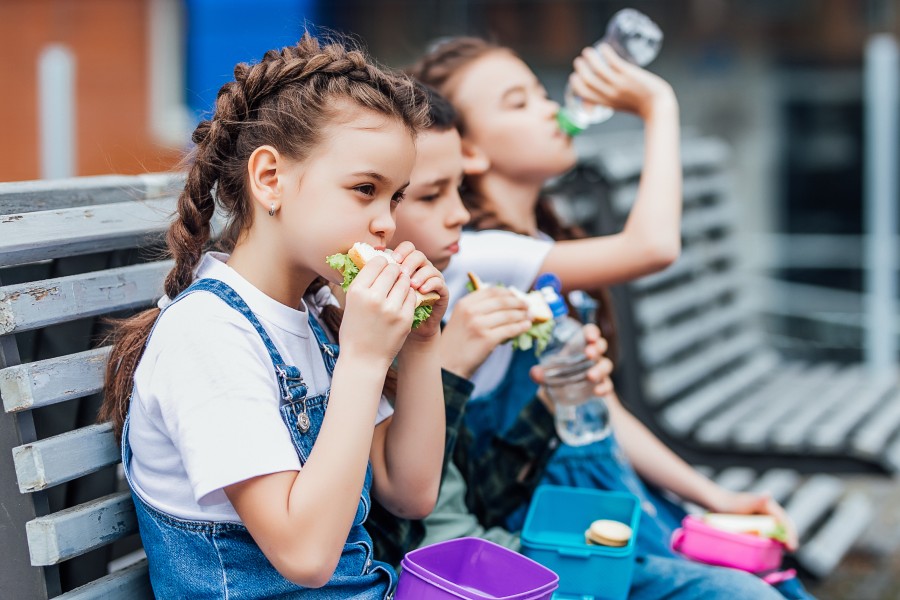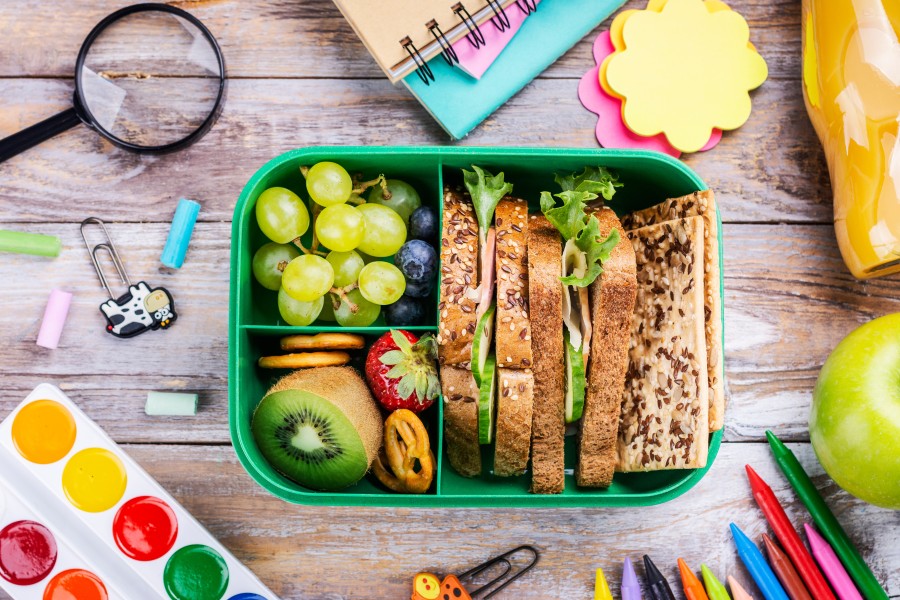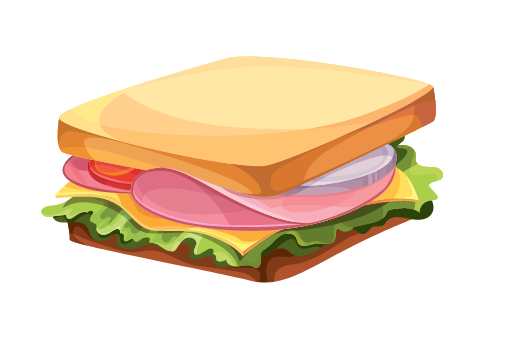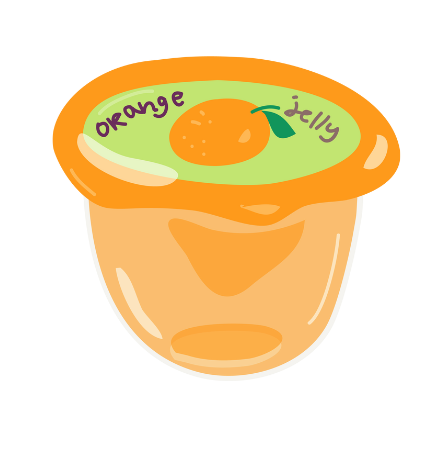Packed lunches for children living with type 1 diabetes

A wide variety of food is essential for growth, development and health in children [1].
If your child has type 1 diabetes, they can eat the same food as children without diabetes however, you will also need to consider how food impacts their blood glucose levels [1].
Read on to find out more about a balanced diet and packed lunch ideas for children with type 1 diabetes.
What should a balanced packed lunch include?

Food is made up of different nutrients [1]:
-
Carbohydrates (carbs)
-
Protein
-
Fat
-
Fibre
-
Vitamins
-
Minerals
Eating a wide variety of food from different food groups, with different nutrients, is important for growth and development [1]. As part of a balanced diet, a packed lunch should consist of a range of nutrient-rich food to make sure children have enough fuel for the day. You can find out more below:-
Carbs
Carbs are an important part of a balanced diet — they provide the body with glucose, which is converted into energy and used to support physical activity and other bodily functions [3].
In diabetes, carbs are at the heart of meal planning because they are the only nutrient that directly increases blood glucose levels [1]. It’s important to still include carbohydrates in meals and packed lunches because it is a vital source of energy, especially for active children who need plenty of fuel to go through the day [1].
Some sources of carbs have different nutritional values than others [3]. For example, whole grains, like wholemeal bread, are less refined and can sometimes be a better option for you than refined grains such as white bread [3].
Protein
Protein is an essential nutrient that is fundamental to a child's growth and development, and is a source of energy [1, 2, 4].
Protein helps with [1, 2, 4]:
- Building muscle
- Building and repairing body tissues and muscles
- Helping your body absorb nutrients
- Supporting the process of blood clotting, which is important in wound healing
The main sources of protein are meat, tofu and other meat alternatives, eggs, fish, dairy products, nuts, seeds and legumes [1].
Fat
Dietary fats help the body absorb vitamins such vitamin A, D, E, and K [1]. They also help cell production, hormone production and protect your organs. [1].
However, the type of dietary fat children eat is important. There are three types of fat [1]:
- Saturated and trans fats — found in foods such as fatty meats, full-fat dairy products, deep-fried takeaway foods and commercially baked products such as biscuits and pastries
- Polyunsaturated fats — found in foods like sunflower oil, fish, legumes, nuts and seeds
- Monounsaturated fats — found in canola oil, olive oil, avocado, nuts and seeds
Where possible, try to choose unsaturated fats, polyunsaturated and monounsaturated, instead of saturated and trans fats. [1]; The International Society for Pediatric and Adolescent Diabetes (ISPAD) recommends that no more than 10% of a child’s total energy intake be from saturated fats [5]. Too much dietary fat can also increase weight gain.
Your child’s healthcare team can provide more information about dietary fats [1].
Fibre
Fibre provides bulk, helps digestion, and helps prevent constipation [1, 4].
Soluble fibre — which can be found in fruits, oats, barley, legumes and root vegetables — slows down the absorption of food, which can lower blood glucose levels after meals and reduce cholesterol [2].
Insoluble fibre — such as the one found in wheat, wheat bran, grains, and some vegetables — can make you feel full more quickly and lower your appetite [2].
Vitamins and minerals
Vitamins and minerals are necessary to ensure our bones, heart, brain, and overall bodies are functioning properly [4].
Each vitamin has specific benefits and functions within the body [4]. For example, vitamin A supports eyesight, growth, and immune function [4]. Vitamin B1 provides energy to the brain and nerves, and vitamin C helps grow healthy bones, collagen and teeth [4].
Creating a packed lunch
Including food from the five core food groups where possible is important and really helpful for development [1]. These food groups are:
- Vegetables — both starchy, such as potatoes and non-starchy, like carrots.
- Fruit, such as oranges, apples, bananas and berries
- Bread and cereals, preferably wholegrain
- Protein such as lean red meat, poultry and fish or other sources such as eggs, tofu, legumes, nuts and seeds
- Dairy, such as milk and yogurt
Incorporating these foods into a packed lunch can ensure that your child gets enough nutrients for their growth and development [1].
Packed Lunch Inspiration


- A wholemeal sandwich, with cheese and ham
- A handful of fruit such as raspberries or blueberries
- A portion of raw vegetable sticks and a dip of their favourite sauce
- A yoghurt pot

- A wholemeal baguette or sandwich with tuna or salmon mayonnaise
- A banana or sliced up apple
- Some celery sticks stuffed with cream cheese
- A handful of cereal such as cheerios or granola

- A wholemeal wrap with chicken, salad and a small drizzle of sauce
- An easy peel orange
- Some pretzels or breadsticks with a dip like peanut butter
- A handful of sunflower or pumpkin seeds
- A small pot of jelly

- A portion of fresh pasta salad with vegetables and a source of protein
- Some cubes of their favourite cheese
- Sliced boiled egg
- Slices of melon or watermelon
- A handful of raisins or sultanas

- Warm vegetable and/or chicken soup in a flask
- Some wholemeal bread or seeded crackers to dip in the soup
- A portion of cous-cous mixed with vegetables
- A portion of lightly sweetened popcorn
It’s worth being mindful of the little extras such as sauces, dips and spreads as these can contain high levels of salt, sugar and additives.
It’s important to stay hydrated throughout the day and make sure your children have lots of fresh water to drink. You could add some fresh fruit or sugar-free squash to make it a little bit more flavourful if they struggle with plain water.
These suggestions don’t include any sugary snacks needed for treating hypos.
The plate method for meals
You can also use the plate method — an easy way to create healthy meals that can help manage blood glucose [6].
The plate method can help you to create well-portioned meals with a balance of vegetables, protein and carbohydrates to lessen the need to measure food [6].
For each main meal, aim for [6]:
- Half a plate filled with non-starchy vegetables such as tomatoes, broccoli, cauliflower, cabbage, carrots, peppers, asparagus, mushrooms, celery, cucumbers, spinach, lettuce or other salad greens
- A quarter of a plate filled with lean protein such as chicken, turkey, soy products, lean beef, fish, cheese, beans, lentils, nuts, edamame, tofu, tempeh, and other plant-based meat substitutes
- A quarter filled with carbs such as wholegrains (brown rice, oats, bulgur, quinoa, polenta), starchy vegetables such as potatoes, pumpkins, sweet potatoes, butternut squash, or beans and legumes. Dairy and fruit also contain carbs.
Carb counting
If your child has type 1 diabetes, you need to account for carbohydrates and ensure they are administering the correct amount of insulin to the amount of carbs in their meal [1]. The carbs in food need to be counterbalanced with insulin at mealtime, this is called a bolus. [7].
To do this, you will need to count the carbs in your child’s meals [7].
The ideal amount of carbs that someone with type 1 diabetes should consume daily is different for everyone [7]. This amount depends on [1, 5, 7]:
- Age
- Level of activity
- Gender
- Eating habits
It is best to speak to your child’s healthcare team to establish an individualised meal plan [5, 7].
If your child has type 1 diabetes, you need to count the carbs for each meal they plan to eat and ensure they administer the right amount of insulin to stay within their personal range [1, 7]. It is important to note that the amounts of each needed nutrient (carbs, protein, etc.) are different for each child and we recommend that you consult your child's healthcare team if you would like further advice on meal planning.
Sources
- Dietitian/ Nutritionists from the Nutrition Education Materials Online, Queensland Government, Nutrition for children with Type 1 Diabetes, Accessed October 2022. Available at: https://www.health.qld.gov.au/__data/assets/pdf_file/0018/150561/paeds_diabetes.pdf
- Marković-Jovanovic, Snežana. Nutritional management in type 1 diabetes mellitus. Type 1 Diabetes. IntechOpen, 2013.
- Harvard T.H. Chan School of Public Health, The Nutrition Source, Carbohydrates. Accessed October 2022. Available at: https://www.hsph.harvard.edu/nutritionsource/carbohydrates/
- Ohio State University Extension, Nutrition 101. Accessed October 2022. Available at: https://wood.osu.edu/sites/wood/files/imce/nUTRITION%20101.pdf
- S. Francesca Annan, Laurie A. Higgins, Elisabeth Jelleryd, Tamara Hannon, Shelley Rose, Sheryl Salis, Juliana Baptista, Paula Chinchilla, M. Loredana Marcovecchio. ISPAD Clinical Practice Consensus Guidelines 2022: Nutritional Management in Children and Adolescents with Diabetes.
- American Diabetes Association (ADA) Food hub, What is the Diabetes Plate Method? Accessed October 2022. Available at: https://www.diabetesfoodhub.org/articles/what-is-the-diabetes-plate-method.html
- American Diabetes Association (ADA) Food hub, Carb counting and diabetes, accessed 3 October 2022, available online here https://diabetes.org/healthy-living/recipes-nutrition/understanding-carbs/carb-counting-and-diabetes


